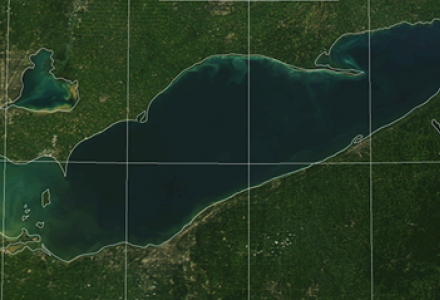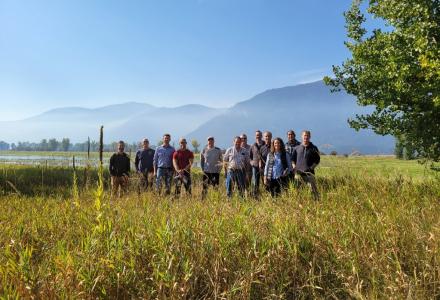
The St. Croix River system contains a series of dams which fish that live part of their lives in the ocean, such as alewives, must navigate in order to spawn each year. An IJC-funded project aims to bring a population model for alewives online.
Beginning in 2013, the IJC funded work through the US Geological Survey (USGS) and University of Maine to investigate how alewife populations bring and take nutrients from the river during their lives. This work was extended in 2015 to include the development of a population model for alewife in the St. Croix River, and was published in 2018.
The population of alewives in the St. Croix has been rebounding since fishways were reopened at Woodland Dam in 2008 and Grand Falls in 2013. As of last year’s fish count, about 270,659 alewives passed the Milltown dam on their way to spawn. But that’s still a far cry from a recorded peak of 2.6 million in 1987.
The historic alewife capacity for the river is estimated at 12 million to 24 million individuals. This potential population boom is dependent on effective upstream and downstream fish passage at the four dams on the main stem of the river.

Resources such as the population model that’s under development could be used to determine which dam within the system is the most vital one to focus on for improved fish passage, said Betsy Barber, model developer and postdoctoral associate with the Maine Cooperative Fish and Wildlife Research Unit at the University of Maine’s Department of Wildlife, Fisheries and Conservation Biology.
Using about US$85,000 through the IJC’s International Watersheds Initiative, Barber, USGS and the University of Maine are working to make her population model available to a wider audience through an online application.
“People who don’t have experience doing population models could use these inputs to specify dam passage rates, click a button, and get outputs … to identify different management scenarios,” Barber said. The project is in a beta phase, and Barber said she aims to have it ready for the St. Croix River Watershed Board to review at its June meeting. Once approved, the model will be accessible through a link on the board’s website.
There are limits to the model, however. There is information available on general alewife population trends, Barber said, but there’s a lack of data on passage rates upstream and downstream at specific dams on the St. Croix River. Should more data become available on passage at the dams, that could provide refined dam passage rates for alewives that would help managers better target which dams to focus on.
“Right now, the baseline passage rates we have are estimated using escapement data from the 1980s,” which refers to the number of spawners recorded in the river, Barber said.
The dams are a key reason for this. Alewives found their paths blocked by dams going back to the 1800s, though an IJC order from 1923 notes that some dams had fishways constructed going back to 1867 (the order approved new fishways being constructed). Milltown dam has seen fishways over the decades in various states of quality and repair, with the current fishway most recently improved in 1981. Fish passage restrictions from the 1990s into the 2000s effectively make those years useless in establishing a baseline.
Barber said the online population model could prove useful outside of the St. Croix River. Users will be able to customize the number of dams and amount of usable habitat to apply to other rivers within Maine and New Brunswick, where alewife population management and restoration are key concerns.
Looking ahead, Barber said there is interest in producing models for other species in the St. Croix River that live part of their lives in the Atlantic Ocean, such as shad and American eels. While studies have been done in the Penobscot River, the lack of information for specific species and time periods on the St. Croix River remains a major hurdle, she said.

Kevin Bunch is a writer-communications specialist at the IJC’s US Section office in Washington, D.C.




